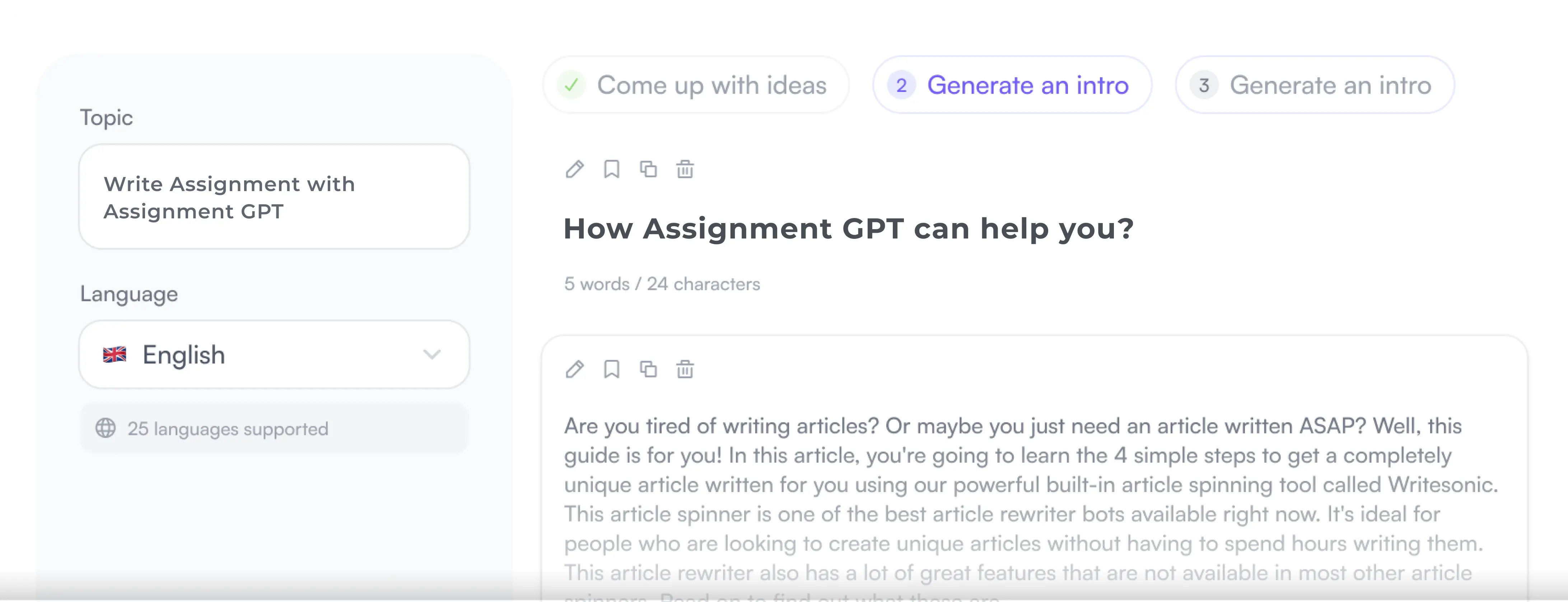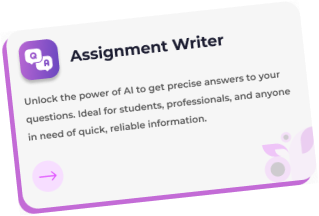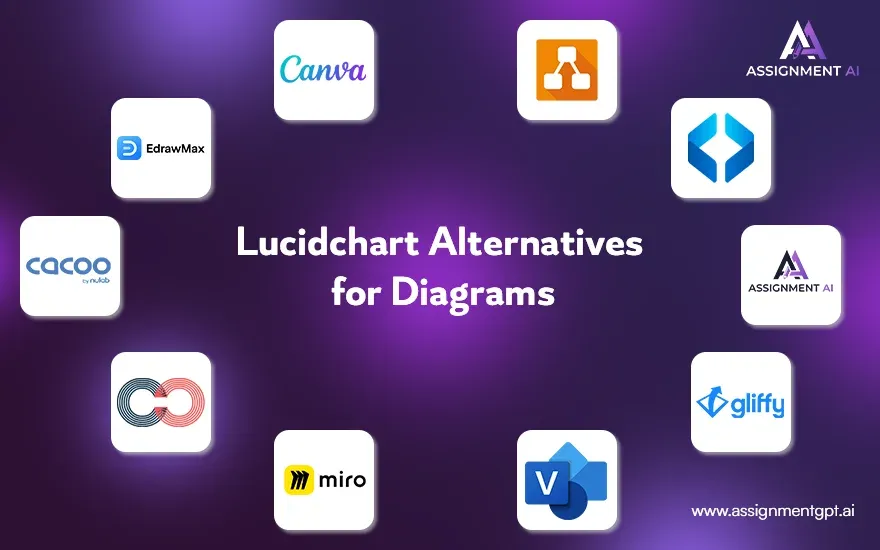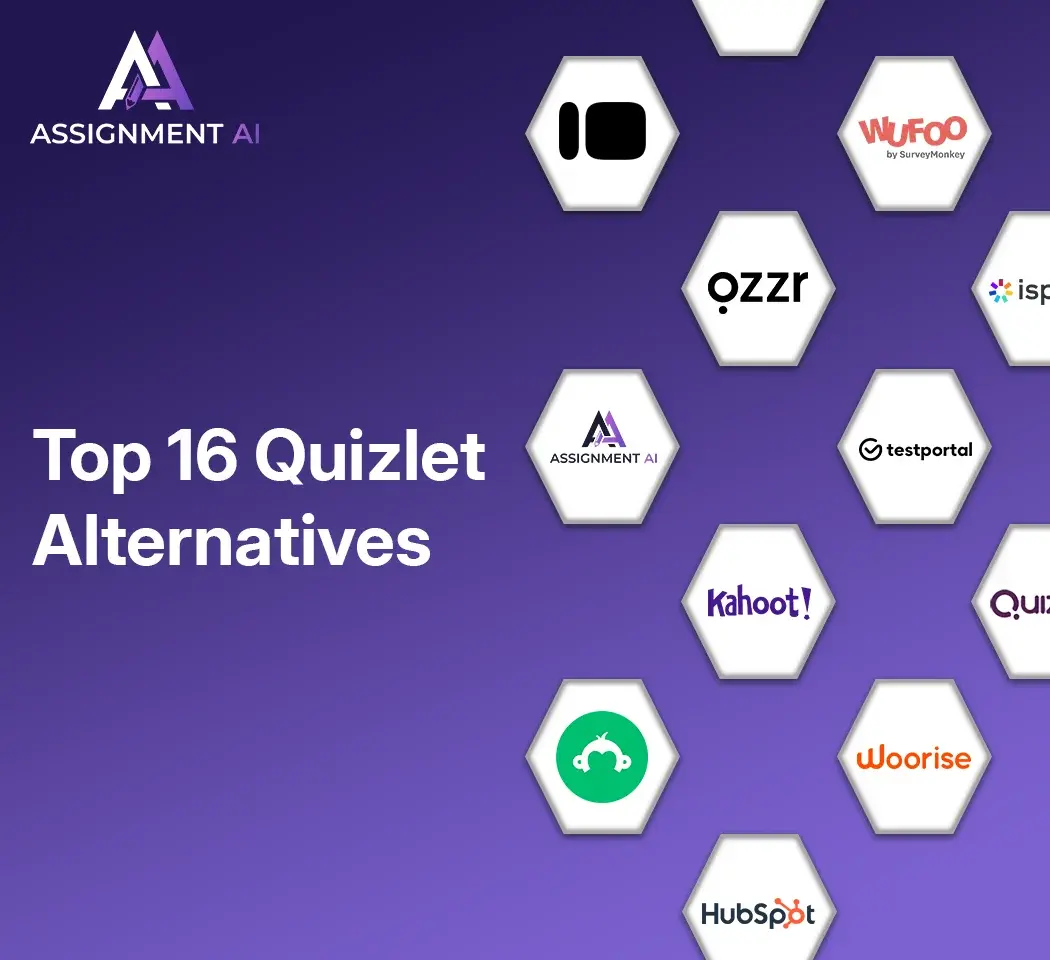AssignmentGPT Blogs
Diagramming is no longer just a techie timepass for engineers. It’s a universal language used by professionals, students, and freelancers worldwide to map out big ideas. Over the years, Lucidchart has emerged as a top tool. But not everyone wants to stick to a single platform. Searches for a lucidchart free alternative are rising, suggesting that people are hungry for fresh solutions. Whether you’re looking to promote a lucidchart flowchart or explore new diagramming frontiers, there are plenty of lucidchart alternatives ready to help. With around multiple solutions in the market, identifying the right fit can be tricky. That’s why we’ve compared 10 excellent lucidchart competitors, each offering unique benefits to help you diagram like a pro.
Quick Summary
Looking for a lucidchart alternative or an entirely new approach to diagramming? We’ve got you covered. From the advanced AI capabilities of AssignmentGPT AI (Diagram Maker) to the intuitive drag-and-drop magic of Canva, our top 10 picks showcase tools that can serve as a perfect lucidchart free alternative for individuals and businesses alike. Some people prefer supercharged features; others just want a simple, user-friendly interface. The good news is that there’s something for everyone, whether you need unlimited shapes, easy collaboration, or the ability to create a lucidchart flowchart from scratch. With user bases growing (in some cases reaching new sign-ups daily), the diagramming scene is more competitive than ever. Let’s dive in.
What is Lucidchart?
Lucidchart is a cloud-based diagramming tool. It lets you create flowcharts, mind maps, org charts, and more. It’s known for its streamlined interface, real-time collaboration, and extensive template library. From brainstorming sessions to full-scale design projects, Lucidchart has long been praised for its robust feature set. The platform has grown so popular that it sees an average of monthly searches specifically tied to “lucidchart flowchart.” However, as with most platforms, it may not tick every box. Some users might crave more advanced features, or perhaps a more budget-friendly plan. That’s where lucidchart alternatives step in to offer new possibilities.
Features of Lucidchart
- Drag-and-Drop Editor - Easily create diagrams with a smooth interface.
- Templates and Shapes - Offers a large selection of premade templates and shape libraries.
- Real-Time Collaboration - Multiple team members can edit the same project simultaneously.
- Integration Options - Connects with Google Drive, Slack, and other popular apps.
- Data Linking - Sync shapes with external data for automated diagram updates.
Pros and Cons of Lucidchart
On the plus side, Lucidchart shines with its collaboration tools, user-friendly interface, and wide range of templates. For large organizations or teams, these features can be game-changers. However, if you need highly specialized functions or want advanced AI-based diagram creation, Lucidchart might feel a bit limited. Also, some of its more powerful features reside behind higher-tier plans, which may stretch budgets. Users who aren’t fans of monthly subscription fees or who crave deeper customization often look for a more cost-effective lucidchart free alternative.
Pricing of Lucidchart
- Free Plan - Limited diagrams and features.
- Pro Plan - Paid monthly or annually, unlocking extra templates and collaboration tools.
- Team & Enterprise Plans - Scales pricing based on user count, with advanced admin controls.
Top 10 Lucidchart Alternatives
Here are 10 excellent options for diagramming and collaboration. Miro stands out for its interactive whiteboard capabilities, while Visio is ideal for professionals seeking advanced features. Creately offers easy-to-use templates for teams, and Draw IO (diagrams.net) is a free, open-source solution. Cacoo enables real-time team collaboration, and Gliffy provides intuitive tools for beginners. Canva is a versatile platform with stunning visuals, while EdrawMax supports diverse diagram types. Whimsical is perfect for wireframes and mind maps, and SmartDraw combines simplicity with powerful integrations. Each tool has unique strengths to suit various needs.
1. AssignmentGPT AI Diagram Generator
This platform embraces cutting-edge AI to help you create diagrams with minimal effort. AssignmentGPT’s Diagram Maker can transform simple text prompts into polished flowcharts Diagram, Class Diagram, and more. If you’re tired of dragging shapes around, its automated approach might be your dream come true.
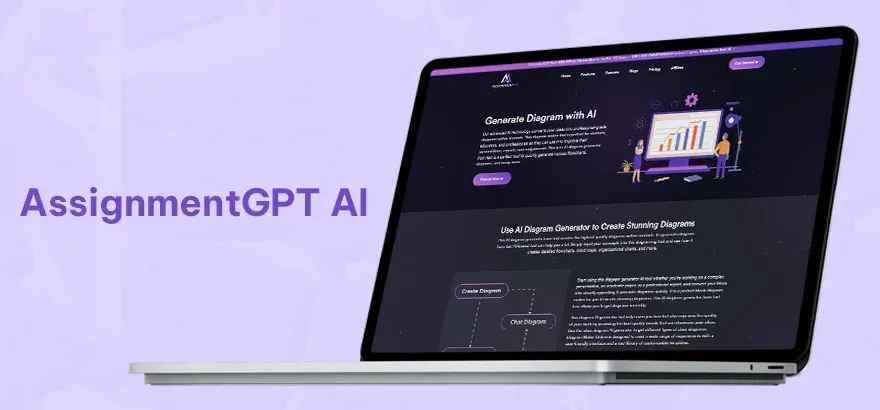
Key features
AI Text-to-Diagram - Enter instructions, and watch your diagram form instantly.
Collaboration Tools - Share projects and gather real-time feedback from teammates.
Cloud-Based Storage - Save all your designs securely online.
Pricing
Free Tier - Basic AI-generated diagrams, limited edits.
Pro Subscription - Extra AI credits, and advanced export options.
Why Choose AssignmentGPT AI Over Lucidchart
If you crave automation and speed, AssignmentGPT AI has your back. It leverages natural language processing so you can skip the manual labor. While Lucidchart caters well to traditional diagrams, AssignmentGPT’s ability to instantly convert text prompts into professional visuals is a game-changer. Whether you’re short on time or just want something fun and futuristic, this is a stellar lucidchart alternative ( monthly searches can’t all be wrong!).
2. Draw IO
This is a free tool that runs in your browser. It does not require any complicated setup or installation. You can work on flowcharts, mind maps, org charts, and other diagrams. There are many shapes and icons to pick from. It also allows you to store your diagrams in various cloud services or on your own device. Sharing with teammates is quick, and they can edit diagrams too.

Key features
Unlimited Diagrams - Create as many charts as you want, at no cost.
Offline Capability - Download the desktop app to diagram without an internet connection.
Version Control - Track changes or revert to previous edits.
Open Source - Free to modify and self-host if needed.
Pricing
Free - All features accessible without paying.
Paid Integrations - Some advanced enterprise tools are available at extra cost.
Why Choose Draw IO Over Lucidchart
Draw Io shines for those seeking a lucidchart free alternative with robust features and no hidden fees. It’s also open-source, meaning you have more freedom to customize. While Lucidchart’s collaboration might feel more polished, Draw IO is perfect for solo freelancers, small teams, or anyone who just wants a simple solution without monthly bills.
3. Gliffy
Gliffy is an online platform for chart creation. You drag and drop shapes onto a blank canvas. It offers templates for things like network diagrams or wireframes. The interface is simple, and you can see past versions of your diagrams. It also works well with apps like Confluence or Jira, so teams can keep all notes in one place.
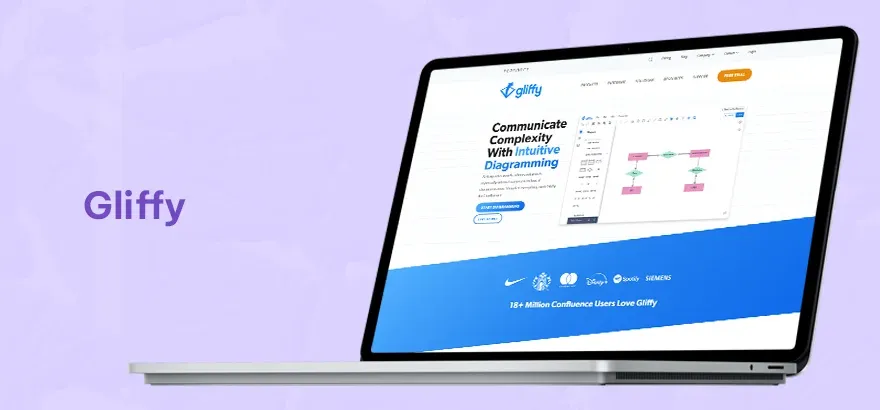
Key features
Drag-and-Drop Interface - Simple element placement.
Templates Library - Wireframes, UML diagrams, and more.
Confluence/Jira Integration - Seamless linking with Atlassian tools.
Revision History - Track changes over time.
Pricing
Free Trial - Test the waters before subscribing.
Premium Plans - Monthly or yearly fees, with more storage and features.
Why Choose Gliffy Over Lucidchart
If you’re in the Atlassian ecosystem, Gliffy is a natural fit. It aligns perfectly with Confluence and Jira, making collaboration easy. Lucidchart also integrates with Atlassian, but Gliffy’s interface and performance can feel more native. It’s a strong lucidchart competitors candidate, especially for agile dev teams who want a sleek, integrated workspace.
4. Visio
Microsoft Visio is part of the Microsoft Office family. It comes with pre-made shapes for many chart types. You can create process flows, floor plans, or organization charts with less effort. It supports linking to real data sources, so diagrams update automatically. This helps keep charts current, which is handy for larger projects.
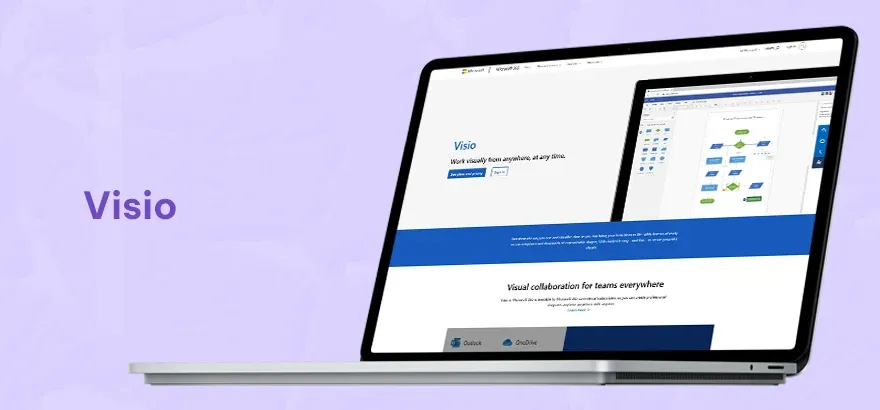
Key features
Vast Shape Library - From flowcharts to complex network diagrams.
Real-Time Co-Authoring - Ideal for big corporate teams.
Office Suite Integration - Insert diagrams into Word, Excel, or PowerPoint easily.
Professional-Grade Templates - Built for technical and business use.
Pricing
Visio Plan 1 - Web version with basic features.
Visio Plan 2 - Full functionality, advanced templates, and local installations.
Why Choose Visio Over Lucidchart
For Microsoft-centric organizations, Visio is the logical choice. Its integration with Office products is unmatched. While Lucidchart appeals to cloud-first users, Visio’s offline capabilities and enterprise-level features remain compelling. If you’re a long-time Microsoft user, Visio might be the most comfortable fit.
Also read this article : Types of Diagrams and How to Choose the Right One
5. SmartDraw
SmartDraw has a wide selection of templates ready to go. You can make business diagrams, floor plans, or project visuals. The software suggests shapes as you build your chart, which can save time. It also exports to popular file types, so sharing is not a hassle. You can work on it in a browser or install a desktop version.
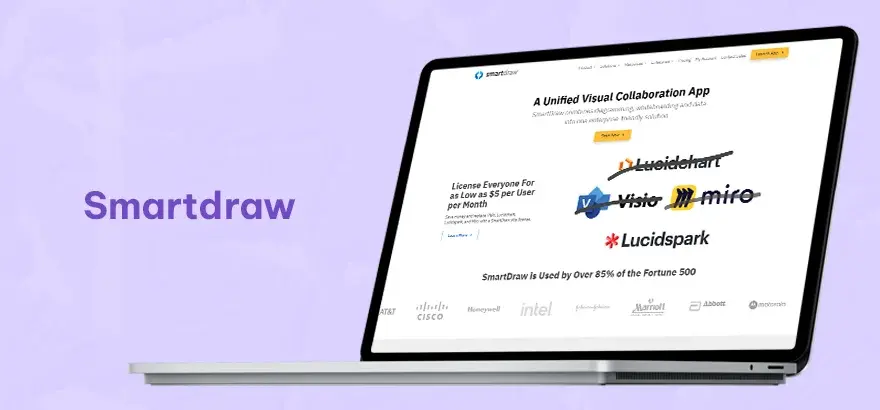
Key features
Intuitive Templates - Flowcharts, floor plans, and organizational charts.
Automatic Formatting - Shapes snap into place without fuss.
Collaboration - Supports shared folders and real-time edits.
Integration - Compatible with Trello, Outlook, and Google Workspace.
Pricing
Single User - Monthly or annual plans.
Multiple Users - Scalable team pricing.
Why Choose SmartDraw Over Lucidchart
SmartDraw excels at turning novices into design pros with its smart formatting engine. If you value speed and variety in templates, it could be your next favorite lucidchart alternative. While Lucidchart has many templates, SmartDraw’s library is famously extensive, making it a strong pick for project managers and architects.
6. Miro
Miro is centered on group work and real-time edits. It features an online whiteboard that can hold flowcharts, sticky notes, or sketches. You can add text, shapes, and images on the same board. It helps remote teams plan, brainstorm, and document ideas together. You can invite others to join, and everyone sees updates immediately.
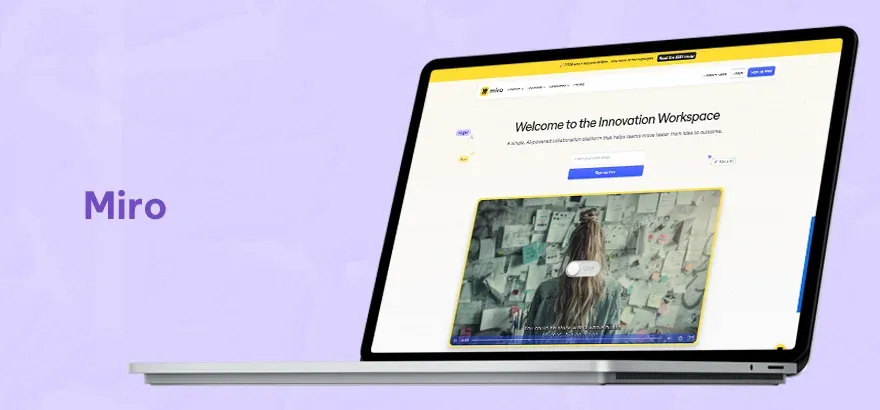
Key features
Infinite Canvas - Brainstorm, sketch, and diagram on one endless board.
Real-Time Collaboration - Ideal for distributed teams.
Templates Galore - From mind maps to concept diagrams.
Embed and Share- It is easy to integrate boards into other apps.
Pricing
Free Plan - Limited boards but full real-time collaboration.
Team and Business Plans - Advanced features, more storage, and external integrations.
Why Choose Miro Over Lucidchart
If you’re more about freeform brainstorming than rigid shapes, Miro is your best friend. It offers a playful, creative vibe, perfect for design thinking sessions. Lucidchart is great for structured charts. Miro gives you the freedom to doodle, place sticky notes, or create a quick lucidchart flowchart alternative in a pinch.
7. Creately
Creately offers cloud-based diagramming with a clean layout. It helps users produce charts and drawings for many scenarios. Its collaboration features let multiple people work on the same document without clashes. You can choose from templates for project workflows, software design, or strategy maps. There is also a desktop app if you prefer offline work.
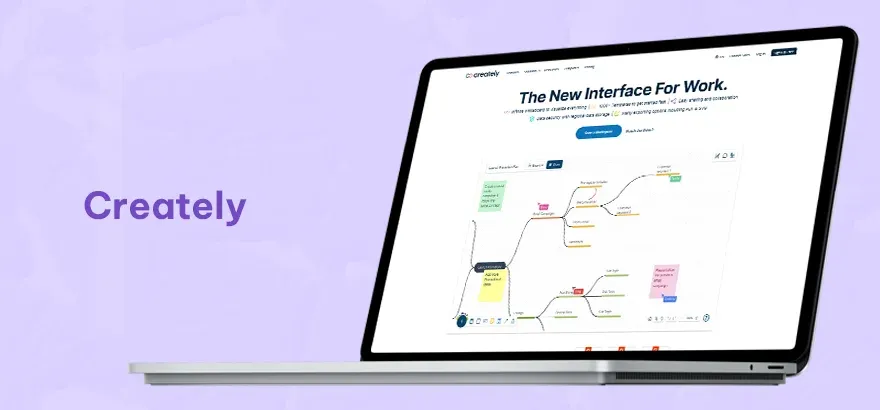
Key features
Real-Time Collaboration - Comment and annotate directly on diagrams.
Project Management Integrations - Sync tasks with diagrams.
Smart Shapes - Auto-adjust shapes to fit your design.
Extensive Template Library - Covers UML, wireframes, and more.
Pricing
Free Plan - Limited workspace and collaborators.
Pro and Enterprise - Scales with advanced features and integrations.
Why Choose Creately Over Lucidchart
Creately helps you move beyond just drawing. It lets you plan entire projects visually, bridging the gap between diagrams and task management. If you want a single tool to design processes, assign tasks, and track progress, Creately is a strong lucidchart free alternative that can handle the entire workflow.
8. Cacoo
Cacoo is an online diagram tool that supports real-time teamwork. It allows you to build flowcharts, wireframes, and other visuals in your browser. You can invite teammates to view or edit. Comments can be added directly on the diagram. It integrates with chat and task management tools, which keeps everything organized in one place.
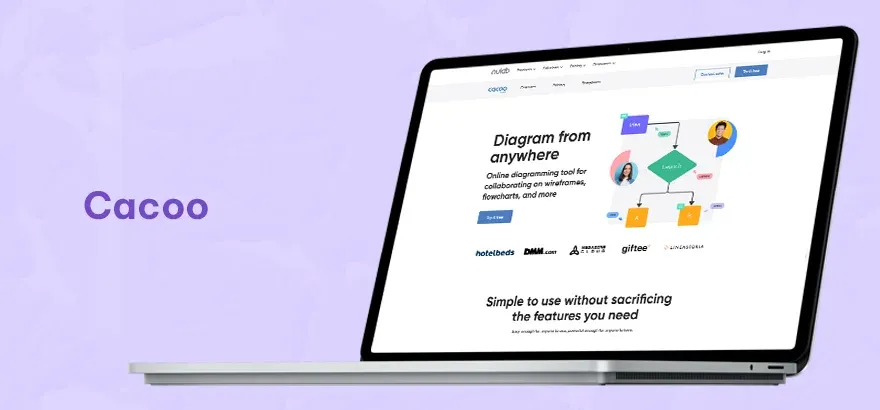
Key features
Live Collaboration* - Edit diagrams simultaneously with team members.
Presentation Mode - Show off designs without exporting.
Version History - Roll back to older diagram versions easily.
Plug-in Integration - Works with Slack, Confluence, and more.
Pricing
Free Plan - Basic functionality for a few diagrams.
Pro Plan - Unlimited diagrams, collaboration features, and integrations.
Why Choose Cacoo Over Lucidchart
For teams that prioritize real-time feedback and effortless sharing, Cacoo stands out. While Lucidchart handles collaboration well, Cacoo’s interface is more casual and approachable for non-technical users. It’s a fantastic lucidchart competitors option if you enjoy a more fun, friendly design environment.
9. EDrawMax
EDrawMax is a standalone software that includes hundreds of diagramming options. It covers basic flowcharts, mind maps, infographics, and more. The interface resembles Microsoft Office, so navigation feels familiar. You can export to images, PDFs, or other formats. This flexibility makes it a popular choice for many fields like education or engineering.
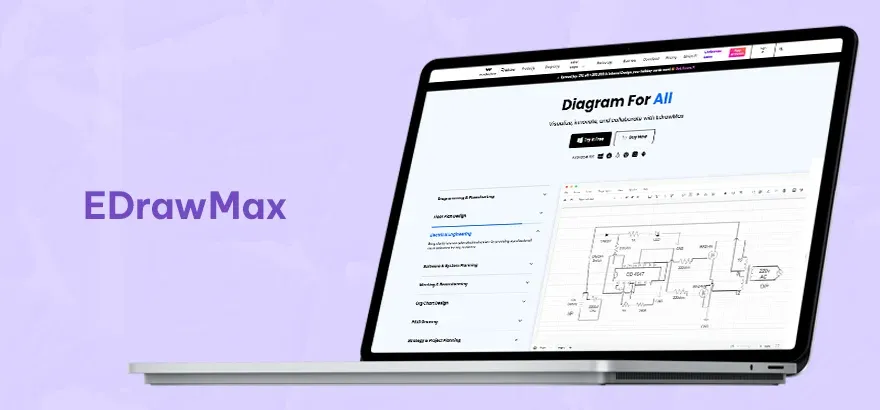
Key features
2D and 3D Diagram Capabilities - Useful for tech-savvy professionals.
Huge Symbol Library - Covering over 280 diagram types.
Desktop & Online Versions - Switch between local or cloud usage.
Data Visualization - Create infographics and charts seamlessly.
Pricing
Free Trial - Feature-limited, great for testing.
Lifetime License - One-time fee for desktop use.
Subscription Options - Cloud-based with collaborative features.
Why Choose EDrawMax Over Lucidchart
If you need more than just flowcharts like 3D diagrams or specialized engineering plans EDrawMax is a force to be reckoned with. While Lucidchart is awesome for everyday diagrams, EDrawMax’s expansive toolset can be a game-changer. It’s an excellent lucidchart alternative for power users who want advanced functionality without juggling multiple software tools.
10. Canva
Canva is known for quick graphic design tasks, but it also supports diagram creation. It has a user-friendly editor with drag-and-drop features. You can select from a large library of icons, backgrounds, and text styles. When you finish, you can share or download the result in many formats. This helps if you need to place the diagram in a presentation or website.
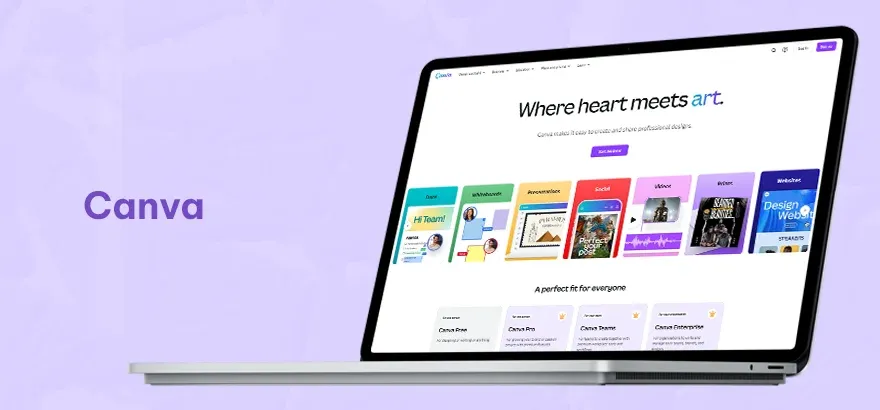
Key features
Drag-and-Drop Editing - Simple, design-focused interface.
Massive Asset Library - Icons, images, fonts.
Collaboration - Real-time editing and commenting.
Brand Kit - Keep designs consistent with brand colors and logos.
Pricing
Free Plan - Generous library of templates and design elements.
Pro and Enterprise - Advanced brand controls, bigger storage, premium assets.
Why Choose Canva Over Lucidchart
If you’re a marketer, student, or entrepreneur who cares about aesthetics, Canva is a top pick. Its polished templates and extensive media library make it ideal for creating visually stunning diagrams. While Lucidchart specializes in technical diagramming, Canva leans into creativity. It’s perfect for infographics, mind maps, and anything that needs a designer’s touch.
Choosing the Best AI Diagram Generator
Before you jump ship from Lucidchart or any other tool, think carefully about what you need most. Are you yearning for automation, extensive shapes, or real-time collaboration? For instance, if you want an AI-driven experience that can parse text and create visuals instantly, AssignmentGPT AI’s Diagram Maker might be your best bet. Alternatively, if you love integrating with your existing project management system, Gliffy or Creately could be perfect. Ultimately, choosing an AI diagram generator depends on your specific project scope, budget, and the level of creativity you desire.
Conclusion
Finding the right diagram-making tool depends on your specific needs, budget, and collaboration requirements. Among the top lucidchart alternatives, AssignmentGPT AI’s Diagram Maker stands out for its intuitive interface, advanced AI features, and affordability. Whether you need flowcharts, mind maps, or organizational charts, AssignmentGPT’s Diagram Maker is the ultimate choice for generating professional-quality diagrams effortlessly. And with new lucidchart competitors popping up left and right, you’ll never run out of options. So get out there, experiment a little, and say hello to a brighter diagramming future.
FAQs
1. What is the best lucidchart alternative for creating a quick lucidchart flowchart ?
2. Why do people search for a lucidchart free alternative if they already have Lucidchart?
3. Are there more than diagram maker tools in the market?
4. Which lucidchart competitors offer offline capabilities?
5. Is AssignmentGPT AI Diagram Maker better than Lucidchart for beginners?
6. Who uses Lucidchart?
7. Is Lucidchart actually free?
8. Does Lucidchart work offline?
9. Which is better, Visio or Lucidchart?
10. Is Figma better than Lucidchart?
11. What is the difference between Canva and Lucid?
Content writer at @AssignmentGPT
Kandarp’s world is powered by conversations, content, and creativity. With experience across branding, literature, publishing, and strategy, he has helped shape identities and stories for businesses across industries. At AssignmentGPT AI, he leads a team that blends sharp content, strong design, and local insight to turn businesses into brands that connect with people.
Master AI with
AssignmentGPT!
Get exclusive access to insider AI stories, tips and tricks. Sign up to the newsletter and be in the know!
Transform Your Studies with the Power of AssignmentGPT
Empower your academic pursuits with tools to enhance your learning speed and optimize your productivity, enabling you to excel in your studies with greater ease.
Start Your Free Trial ➤Start your success story with Assignment GPT! 🌟 Let's soar! 🚀
Step into the future of writing with our AI-powered platform. Start your free trial today and revolutionize your productivity, saving over 20 hours weekly.
Try For FREE ➤